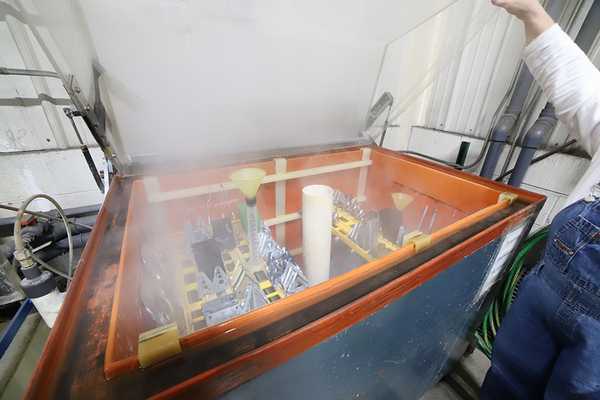- Qinsun Instruments Co., Ltd.
- Tell:+86-21-6780 0179
- Phone:+86-17740808215
- Address:No. 2578 Minhang District Gu Dai Road, Shanghai
- Contact:Mr. Li
- QQ:846490659
What factors can affect the results of the ASTM B117 test?

The results of the ASTM B117 test, which evaluates the corrosion resistance of materials through salt spray exposure, can be influenced by several factors. It's essential to consider these factors when conducting the test and interpreting its results. Here are the key factors that can affect the outcomes of the ASTM B117 test:
1. Material Composition and Surface Finish: The composition of the material being tested, as well as its surface finish, can significantly impact the test results. Different materials exhibit varying levels of resistance to corrosion, and surface finishes, such as coatings and treatments, can provide additional protection. It's important to consider the material's composition and surface finish when interpreting the test results.
2. Sample Preparation and Surface Condition: Proper sample preparation and ensuring consistent surface conditions are crucial for obtaining accurate test results. The preparation of samples, including cleaning, degreasing, and surface treatment, should be performed in accordance with ASTM B117 standard practices to ensure uniformity across specimens.
3. Test Chamber Operation and Control: The operation and control of the test chamber, including parameters such as temperature, humidity, and salt concentration, can directly impact the results of the ASTM B117 test. Maintaining stable and consistent conditions within the test chamber is essential for reliable and reproducible outcomes.
4. Exposure Time and Test Duration: The duration of salt spray exposure and the overall test period can influence the observed corrosion behavior. Longer exposure times may reveal additional insights into the long-term performance of materials under corrosive conditions. It's important to carefully consider the test duration and exposure time when interpreting the results.

5. Salt Solution Spray Characteristics: The characteristics of the salt solution spray, including droplet size, distribution, and velocity, can affect the corrosion process. Controlling these spray characteristics within the specified parameters outlined in the ASTM B117 standard is crucial for obtaining accurate and comparable results.
6. Intermittent Spraying and Drying Time: In some cases, the ASTM B117 test involves intermittent spraying and drying cycles to simulate the natural environmental conditions. The duration and frequency of these cycles can impact the corrosion process and should be carefully controlled and documented during the testing procedure.
7. Monitoring and Inspection Procedures: The methods used to monitor and inspect the test specimens during and after the salt spray exposure can influence the observed results. Consistent and systematic inspection procedures, including visual examination and measurement of corrosion products, are essential for accurate assessment.
8. Sample Orientation and Positioning: The orientation and positioning of the test samples within the test chamber can impact the distribution of salt spray and, consequently, the corrosion behavior. Ensuring uniform exposure across all samples is critical for obtaining reliable test results.
9. Environmental Factors: Environmental factors, such as ambient temperature and humidity, may indirectly affect the operation of the salt spray chamber and, subsequently, the test results. Monitoring and controlling these environmental conditions during testing are important for maintaining consistency and reliability.
10. Interactions with Other Materials: In real-world applications, materials may interact with other substances, chemicals, or agents that can influence their corrosion behavior. Understanding these potential interactions and their effects on the test results is important for comprehensive evaluation.
In conclusion, multiple factors can impact the results of the ASTM B117 test, and a thorough understanding and control of these factors are essential for obtaining accurate and meaningful data. Careful consideration of material properties, testing conditions, and monitoring procedures is necessary to ensure the reliability and relevance of the test results for assessing the corrosion resistance of materials.





